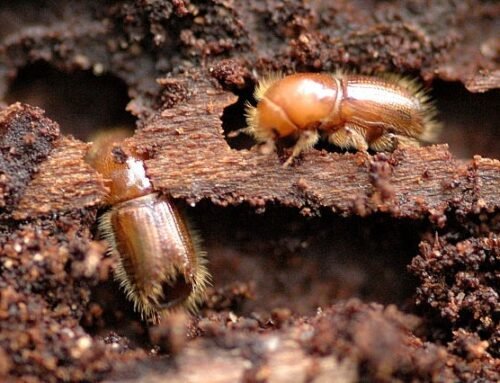Troubled by Bed Bugs infestations or worried about how effective treatments by professionals can be like?
Most local pest controllers would generally give advices on bed bugs control simply by using fumigation (Gasing of the entire premises) or using high temperature steaming.
How effective are they? Let’s find out.
Fumigation (Gasing of the entire premises)
Fumigation involves shutting the entire premise as pest management professionals would release toxic gas to kills the bed bugs. This is a no brainer in terms of eradicating bugs or basically any other insects you might have in the premises. However, this does not necessarily mean the problem is solved as the bed bug eggs are not killed in the process. As the eggs are not destroyed, the problem still exists. Furthermore, cleaning the entire premise is extremely crucial, as you won’t want remnant of the toxic gas to linger in the house.
High temperature steaming
High temperature steaming makes use of the fact that bed bugs are afraid of high heat as they would die when their body temperature reaches 50 degrees celcius. Local pest management professionals provide such services which is a much-preferred method of eradicating bed bugs, as this safe method reduces the amount of harmful chemicals existing in the house.
The only drawback for this method is the extensive time spent in steaming each and every nook and cranny in the house which would easily take hours. which would highly increase the chances of places left untreated.
Would replacing a new mattress be a better solution in an infested place?
Replacing of mattress is of course the best solution for an infested mattress however most would not dispose a relatively new mattress. But should you decide to replace a mattress, please do take note to clean up the premises as well prior to replacing one.
DO NOTE THAT BED BUGS DON’T COME FROM MATTRESSES, or rather, mattresses don’t give birth to bed bugs!!
We have queries in terms of mattresses having bed bugs. It is important to note that you can be a carrier for bed bug as well that would infest the house, including your beloved mattresses.
How do we know our house is infested with bed bugs?
Do keep a proper lookout for any presence of live or dead bed bugs, blood stains or blood speckles, scattered cast skins or egg. Should you have bites, see if the bites form a line (as the bugs are generally quite smart in terms of sucking your blood right long your veins). In serious cases of infestations, sickly sweet or pungent odour can be detected.
Biology
Females bugs generally lay 50–520 eggs over their life. They usually deposit 1–5 eggs/day in clusters on rough surface in dark and dry areas and continue to lay for 4–5 days after each feeding. After 5–7 days, eggs hatch into nymphs. Nymphs take blood meals prior to each moult and develop through 5 nymphal instars in 35–48 days. With normal feeding and reproductive cycles, mated males and females can live for 100 and 50–70 days, respectively.
Habitat
Warm, moist, and dark areas such as ceiling voids, wall cavities, around mattress seams and bedding, in box springs, behind headboards, picture frames, mirrors, and loose wallpapers, light switches, door and window frames, curtains, under carpets, furniture, floorboard cracks, other cracks and crevices, etc.
Diet
Bed Bugs feed on the blood of warm-blooded animals such as humans, chickens, bats, etc. Nymphs become fully engorged after feeding for 3–10 minutes, while adults take 10–15 minutes. They usually require 2 days to digest their blood meals and feed again after 3–7 days.
Habit
Bed bugs are efficient hitchhikers and easily transported. They can disperse over long distances for a considerable period of time in search of a new host. They are mainly nocturnal (active at night) and hide during the day. They only approach a host when they intend to feed and spend most of their time hiding or resting. They require blood meals to mate, lay eggs, and moult. However, they can withstand long periods without feeding.
Preventive Measures
When staying in the public accommodations such as hotels, inspect bed and furniture before using. Keep your luggage off the floor and bed, and check your luggage before leaving, check rented or used furniture before bringing them back to the premises or if possible, avoid using them, seal up voids in walls, floors, window frames, and furniture, eliminate clutter in and around the premises, launder items, which are suspected of having bed bugs and dry them on the highest dryer setting.
One main thing to take note is bed bugs can’t withstand high temperature. Therefore, soaking clothes in hot water (50 degrees celcius) before washing them is generally a good habit after bringing clothes (worn or unworn) back from a trip.


